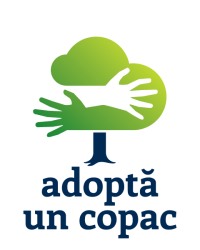Who are we?
How we started
In 2008 Viitor Plus – for humans and nature started the afforestation programme Adoptă un copac thinking about the importance of regaining lost forest land, rehabilitating degraded land and having in mind the crucial role that forests play in the fragile balance of life.
Between 2008 and 2016, under the umbrella of ViitorPlus, over 10,000 volunteers were involved in creating 36 hectares of new forest. In addition, funds were raised for another 21 ha. The total 57 hectares were transferred for administration to the Padurea Copiilor Association, in July 2016, upon its departure from ViitorPlus.
Since November 2016, ViitorPlus has resumed afforestation efforts through the programme Adoptă un copac, through which we aim to continue making an important contribution to the growth and protection of forest areas in Romania, with a focus on protective forest belts, and with the involvement of as many people as possible.
Our vision
Is to rediscover the connection between people and nature and to invest in what we leave behind.
Our mission
Follows three main directions:

- 1. We help increase the forested area in southern Romania, in order to combat and adapt to climate change.

2. We inspire the implementation of responsible behaviors related to the use of forest resources.

3. We contribute to the education of the public on the importance of forests.
Our values
- 1. Integrity
- 2. Transparency
- 3. Leading by example
- 4. Involvement of stakeholdersi
- 5. Personalized, practical, and long-term approach
- 6. Replicability
- 7. Promoting a balanced and harmonious life
We plant because we have realized the crucial importance of the multiple benefits, services and values of forest ecosystems for our society.
Protection and regulating services
- Carbon sequestration
- Local climate regulation
- Reducing air and water pollution
- Erosion control
- Flood control
- Improving soil quality
- Physical protection against extreme weather events
Support services
Production and supply services
To the extent that natural resources are responsibly exploited, forests provide building materials, fiber, food (berries, mushrooms) and medicinal or ornamental plants, drinking water.
Social and cultural services
Consist of opportunities for education and information, relaxation and recreation, inspiration and spirituality, as well as numerous health benefits.
The value of forest ecosystems
Economic value
- Direct – market value of forest products, sustainably exploited;
- Indirect – lowered or avoided costs from damage caused by extreme weather events; local economic growth through income from tourism and leisure activities.
Cultural and social value
Artistic inspiration, relaxation, education and information, health benefits, communities formed around forests.
Intrinsic value or ecological value
The importance of forests for maintaining the natural balance of the environment, habitat for numerous species of flora and fauna, support for the functioning of ecological and biological processes.
Statistics about trees and forests
THE FORESTS OF ROMANIA
- The forests in Romania occupy only 27% of the country’s surface, compared to the European
- The most forested counties are those overlapping the Carpathian mountains (Covasna with 46%, Caras-Severin and Suceava with 50%), whereas those with the biggest forest deficit are in the south and east of the country (Calarasi – 4% , Teleorman, Constanța, Brăila with 5%).
- 8 areas with virgin forests (secular forests) in Romania are inscribed in the UNESCO site “.
- Primeval Beech Forests of the Carpathians and the Ancient Beech Forests of Germany
About protective forest belts
- For agricultural land protected by forest curtains, agricultural production in the field increases by up to 20%, even if a part of the land is occupied by trees.
- A forest belt that protects a road from blizzards and snowstorms has been estimated to save about 5,000 euros/km from the state budget.
- Only 2 protective forest belts received funding through the Investment Program from the State Budget for the forestry sector in 2017.
GENERAL STATISTICS
- In a year, an average mature tree captures aprox. 22 kg of CO2 from the atmosphere, in exchange for which it releases oxygen, but this amount can reach up to 150 kg CO2/year for certain species.
- During its growth period, one cubic meter of wood absorbs 1 ton of CO2 and releases 0.7 tons of oxygen into the air.
- A large oak can “sweat” 151,000 liters of water in a year. On average, 40% of rainfall comes from plant evapotranspiration.
- In urban areas, trees lower the air temperature by up to 8 degrees and reduce the use of air conditioners by up to 40%.
- Forests are the habitat for 80% of the world’s terrestrial species.
- Globally, forests provide goods and services worth US $ 75–100 trillion / year.
- Currently, EU forests absorb the equivalent of 10.9% of total greenhouse gas emissions each year.
- Eurostat estimates that one person in the EU emits approx. 7 tons of greenhouse gases / year, for 2018.
- A car emits around 4.6 tons of CO2 / year.
The Team

Project Manager Stakeholders

Project Manager Operations

Forestry Engineer

Forestry Engineer

Education Coordinator

Communication and Marketing Specialist

Logistics Coordinator

Logistics Coordinator

Volunteers Coordinator

Logistics Assistant


